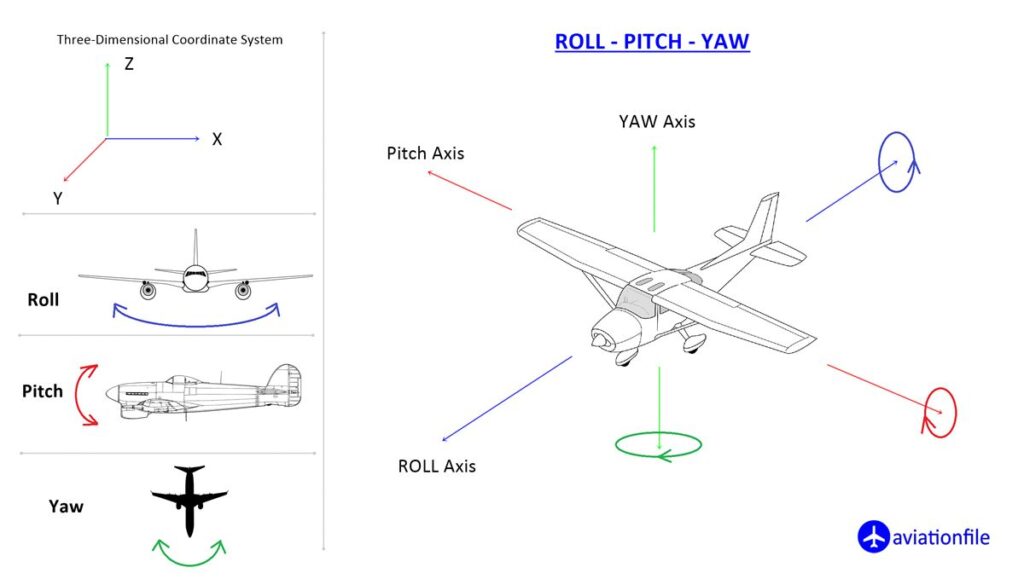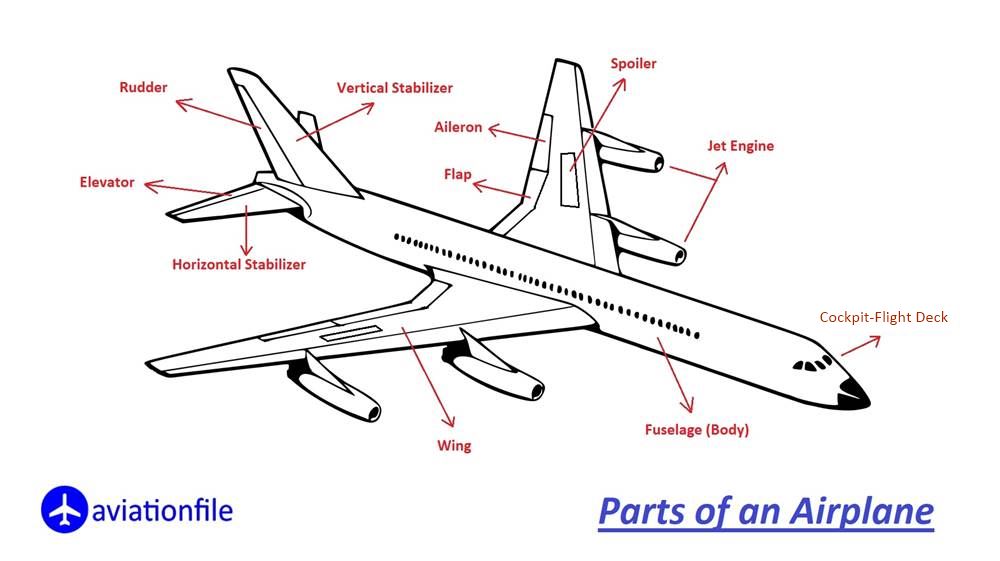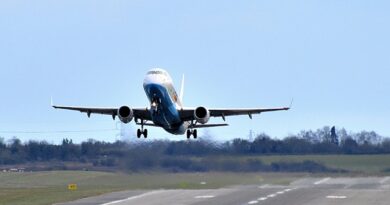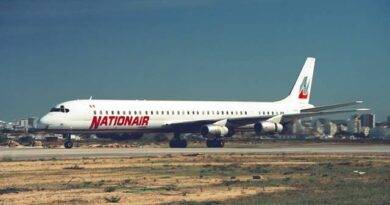The Role of the Airplane Elevator in Pitch Control: A Comprehensive Analysis
The elevator is one of the most critical components in an aircraft’s flight control system, primarily responsible for managing pitch motion. This article delves into the function, mechanics, and implications of the airplane elevator in aviation, integrating academic references, industry insights, and practical applications to provide a PhD-level exploration of the subject.
Introduction to Aircraft Elevators
In the realm of fixed-wing aircraft, the elevator is a primary control surface that governs the aircraft’s pitch—the up and down movement of the aircraft’s nose relative to its horizontal axis. Found on the trailing edge of the horizontal stabilizer, the elevator’s primary function is to control the angle of attack (AoA), which in turn determines the aircraft’s lift and altitude.
Structural and Functional Overview
1. Location and Design
Elevators are typically mounted on the horizontal stabilizer at the tail of the aircraft. The horizontal stabilizer provides stability in pitch, while the elevator introduces control dynamics by altering the aerodynamic forces acting on the stabilizer. Some advanced aircraft employ an all-moving tailplane, or stabilator, where the entire horizontal surface acts as the elevator.
2. Mechanism of Operation
The elevator operates via mechanical or fly-by-wire systems connected to the pilot’s control yoke or stick. When the pilot pulls the control stick backward, the elevator deflects upward, causing the tail to move downward and the nose to pitch upward. Conversely, pushing the control stick forward lowers the elevator, raising the tail and pitching the nose downward. This mechanism directly adjusts the AoA and influences climb, descent, and level flight.

Aerodynamic Principles
1. Pitch Control and Stability
Elevators modulate the pitching moment, which is the torque that causes an aircraft to rotate about its lateral axis. The pitching moment is influenced by:
- Center of Gravity (CG): A forward CG reduces pitch sensitivity, increasing stability but requiring higher elevator deflection for control.
- Aerodynamic Center (AC): Typically located near the quarter-chord point of the wing, the AC determines how lift affects pitching moments.
Elevator deflection alters the tailplane’s lift force, modifying the pitching moment and enabling precise control of the aircraft’s orientation.
2. Angle of Attack and Lift
The AoA is a pivotal factor in lift generation. By increasing the AoA through upward elevator deflection, the aircraft generates greater lift, facilitating climb. Conversely, downward deflection reduces the AoA and lift, enabling descent. However, exceeding the critical AoA can lead to aerodynamic stall.
Technological Variations
1. Stabilators and Canards
Modern aircraft often use stabilators—entirely movable horizontal surfaces that combine the functions of a stabilizer and elevator. Fighters like the F-16 rely on stabilators for enhanced maneuverability. Similarly, canard-configured aircraft use forward-mounted horizontal surfaces to influence pitch.
2. Trim Systems
Trim systems are employed to reduce the need for continuous pilot input by adjusting the neutral position of the elevator. This is achieved through a trim tab mounted on the elevator or via electronic adjustments in modern fly-by-wire systems.
Maintenance and Safety Protocols for Aircraft Elevators
Maintenance and safety protocols for airplane elevators are essential to ensure optimal flight control and prevent in-flight incidents. Regular inspections focus on checking for structural integrity, corrosion, proper hinge movement, actuator performance, and secure attachment to the horizontal stabilizer. Maintenance teams routinely lubricate moving parts, test hydraulic or electric actuator responses, and inspect for wear or fatigue, especially in high-stress areas. Common failure modes include control surface flutter, actuator malfunction, or cable/hydraulic line degradation—any of which can compromise pitch control. To mitigate risks, strict adherence to aircraft maintenance manuals (AMMs), scheduled service intervals, and airworthiness directives (ADs) issued by aviation authorities is required. Additionally, redundancy in control systems, such as dual actuators or backup cables, serves as a crucial safety layer. Ensuring that elevator systems are properly maintained not only guarantees safe handling characteristics but also helps prevent accidents stemming from control surface failure.
Practical Implications
1. Pilot Training and Operations
Understanding the behavior of the elevator is critical for pilot training, particularly in scenarios involving:
- Takeoff and Landing: Precise pitch control ensures smooth transitions between ground and flight.
- Stalls and Recoveries: Effective use of the elevator is vital to manage the AoA during stall recovery procedures.
2. Flight Dynamics and Safety
Malfunctions in the elevator system, such as jamming or runaway trim, can lead to catastrophic outcomes. Modern aircraft incorporate redundant systems and autopilot safeguards to mitigate such risks.
Challenges and Future Directions
Advancements in materials science and control systems are leading to more responsive and durable elevators. Autonomous and unmanned aerial vehicles (UAVs) increasingly rely on advanced control algorithms to replicate and refine the elevator’s functionality without manual intervention.

Conclusion
The elevator is an indispensable component of an aircraft’s control system, playing a fundamental role in pitch regulation and overall flight dynamics. As aviation technology progresses, understanding the interplay of aerodynamics, control mechanics, and system innovations remains essential for ensuring safety, efficiency, and performance in modern aircraft.
Recommended Article: Parts of an Airplane–Fuselage, Engine, Cockpit…
References and Further Reading:
- https://www.faa.gov/regulations_policies/orders_notices/index.cfm/go/document.information/documentid/9886
- https://skybrary.aero/articles/elevator
- https://www.faa.gov/sites/faa.gov/files/regulations_policies/handbooks_manuals/aviation/airplane_handbook/19_afh_ch18.pdf
- https://www.boldmethod.com/learn-to-fly/systems/here-is-what-you-can-do-if-you-lose-elevator-control-in-flight
- https://limblecmms.com/blog/aircraft-preventive-maintenance-checklist/


